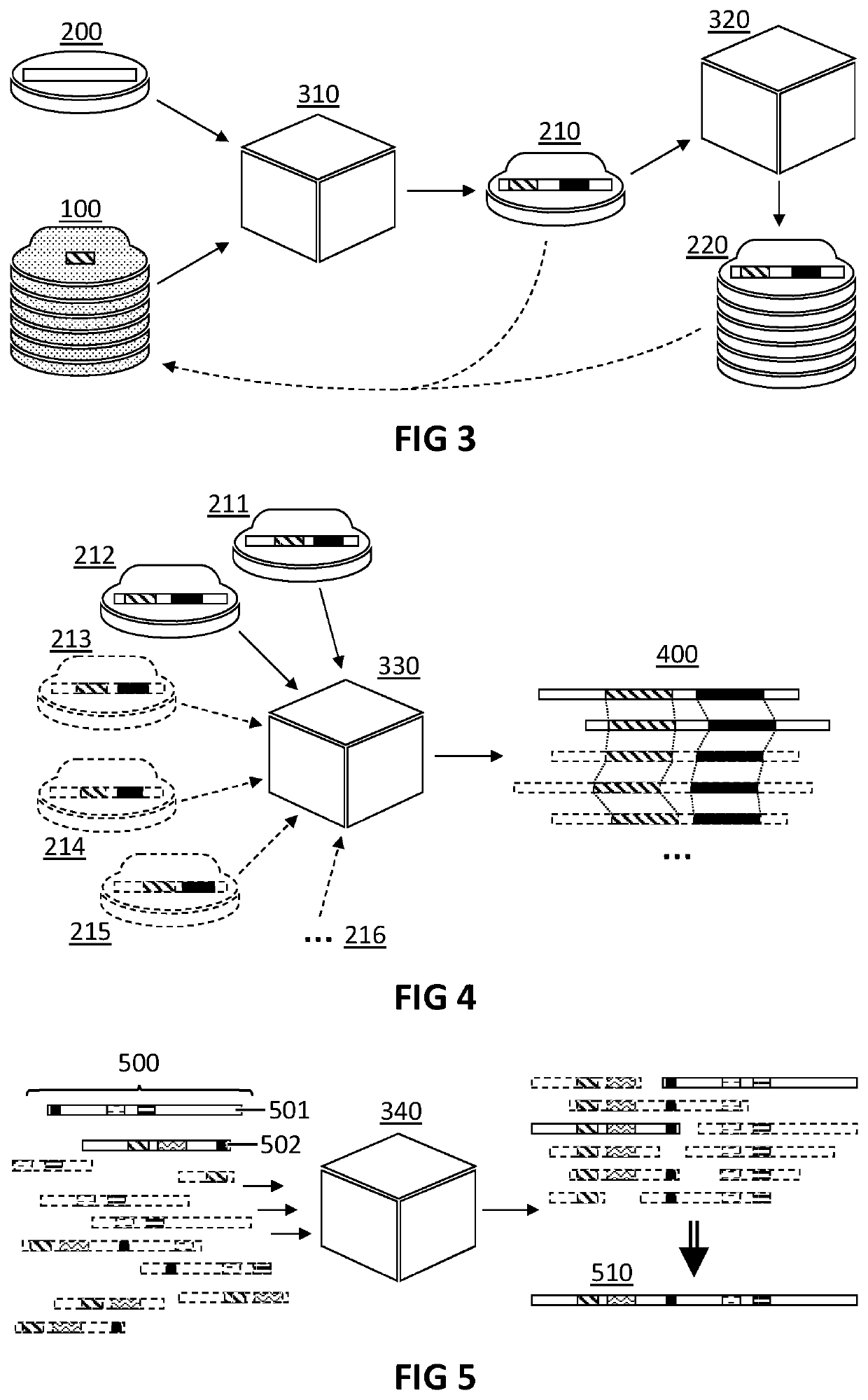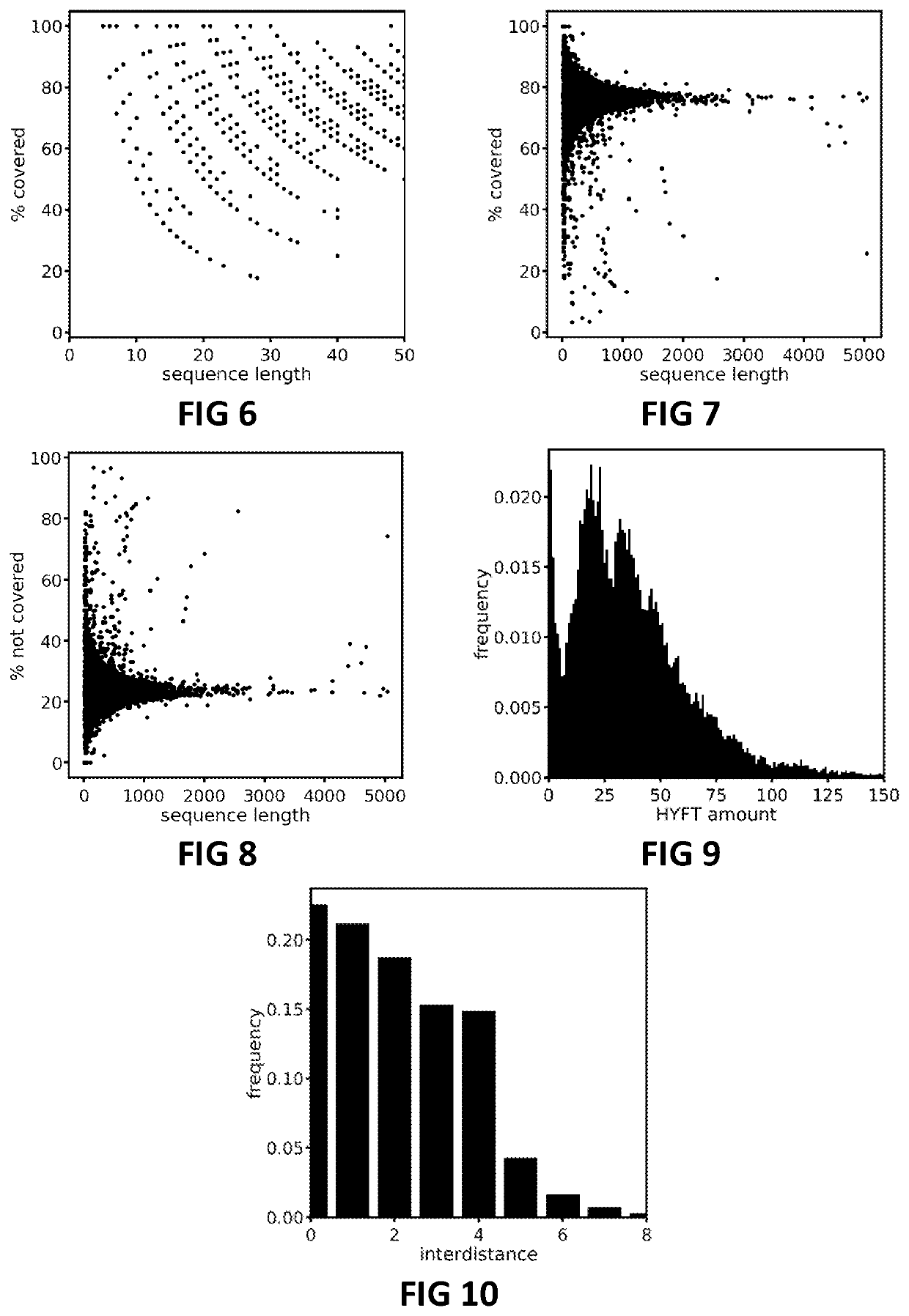Biological sequence information handling
a technology of biological sequences and information, applied in the field of biological sequence information handling, can solve the problems of scaling computation, increasing the complexity of sequencing, so as to reduce the time, increase the length or the number of biological sequences, and increase the complexity
- Summary
- Abstract
- Description
- Claims
- Application Information
AI Technical Summary
Benefits of technology
Problems solved by technology
Method used
Image
Examples
example 1a
f the Protein Data Bank with Respect to the HYF™ Fingerprints Found Therein
[0148]In order to illustrate the pervasive presence of HYFT™ fingerprints in biological sequence databases, the Protein Data Bank (PDB) was taken as an example of a large, commonly available biological sequence database and was processed—in accordance with the present invention—using a repository of fingerprint data strings obtained as described above. The results were analysed with respect to various indicators and a selection thereof is presented below.
[0149]FIG. 6 and FIG. 7 show the HYFT™ coverage ratios (in %) for processed protein sequences up to length 50 and up to lengths over 5000, respectively. Here, the coverage ratio is the part of the total sequence length of which the sequence units were attributed to a HYFT™ fingerprint. In other words, the coverage ratio is the combined length of the one or more first portions divided by the total sequence length.
[0150]The inverse statistic, i.e. the part of t...
example 1b
the Matching Strategy Employed
[0155]Since different strategies can be employed when processing a biological sequence in accordance with the present invention, the difference between two different approaches was investigated. In a first approach, the biological sequences in the PDB database were searched for all occurrences of HYFT™ fingerprints, including overlapping HYFTs™, so that the order in which the HYFT™ fingerprints becomes immaterial. In a second approach, the biological sequenced in the PDB database were searched using a more strict fashion, wherein the searching is performed in order of from longest to shortest HYFT™ fingerprints and—within the same length—from lowest to highest combinatory number and wherein no overlap of HYFTs™ is allowed (i.e. wherein a portion found to be corresponding to a HYFT™ is from then on excluded in search for further HYFTs™). The goal of the second approach being to identify the fewest number of HYFTs™ to describe a processed biological seque...
PUM
 Login to View More
Login to View More Abstract
Description
Claims
Application Information
 Login to View More
Login to View More - R&D
- Intellectual Property
- Life Sciences
- Materials
- Tech Scout
- Unparalleled Data Quality
- Higher Quality Content
- 60% Fewer Hallucinations
Browse by: Latest US Patents, China's latest patents, Technical Efficacy Thesaurus, Application Domain, Technology Topic, Popular Technical Reports.
© 2025 PatSnap. All rights reserved.Legal|Privacy policy|Modern Slavery Act Transparency Statement|Sitemap|About US| Contact US: help@patsnap.com



